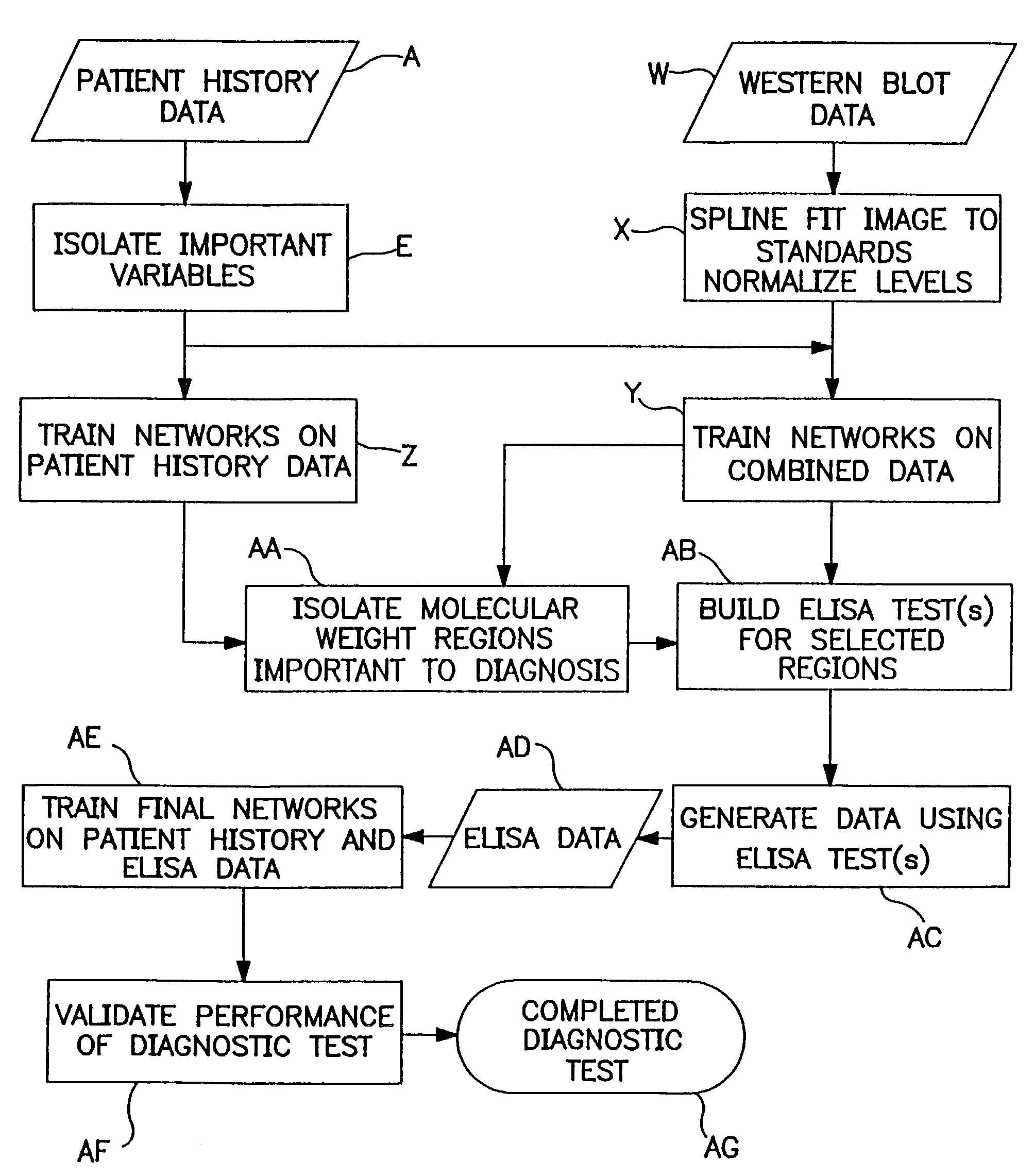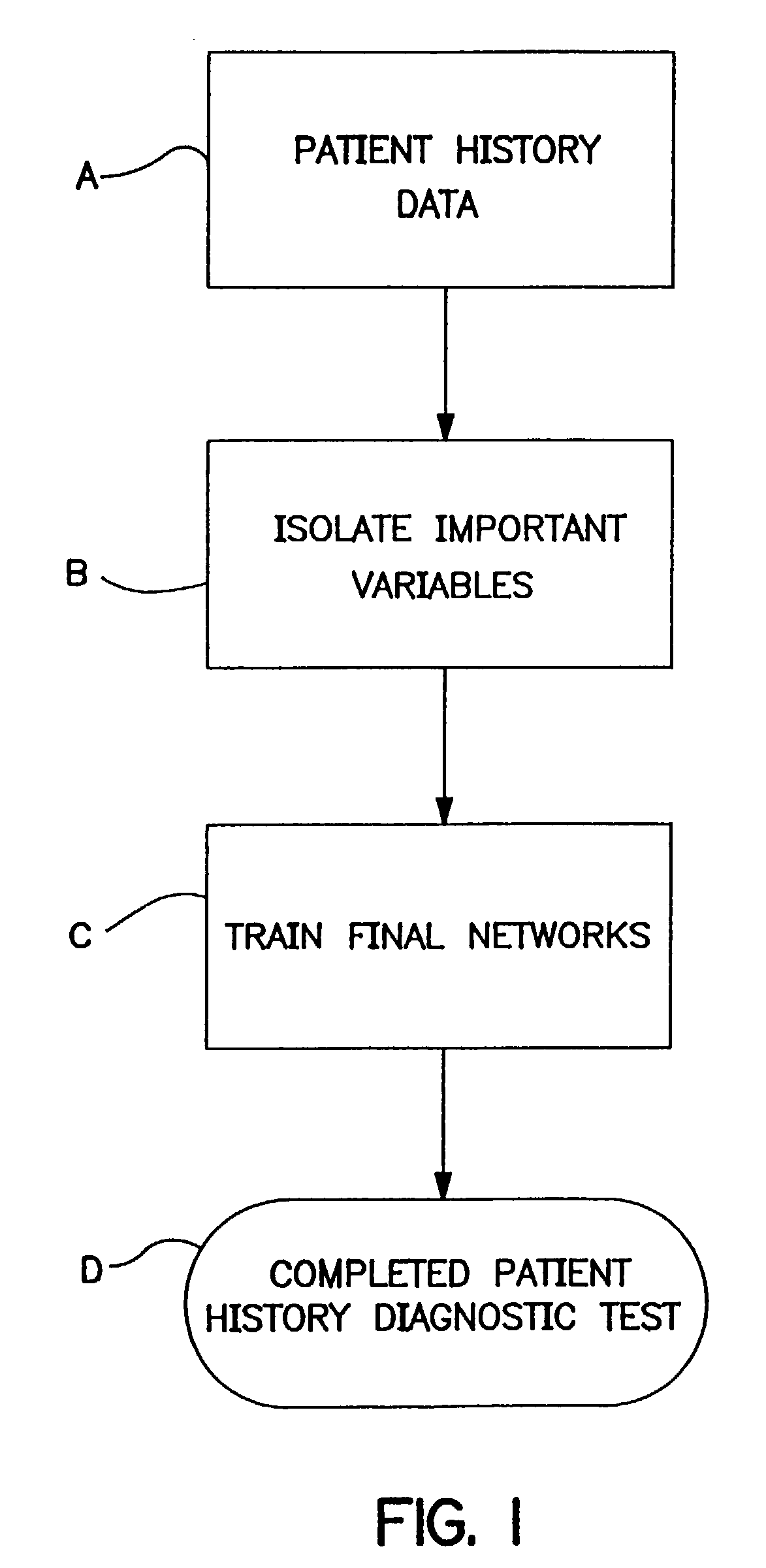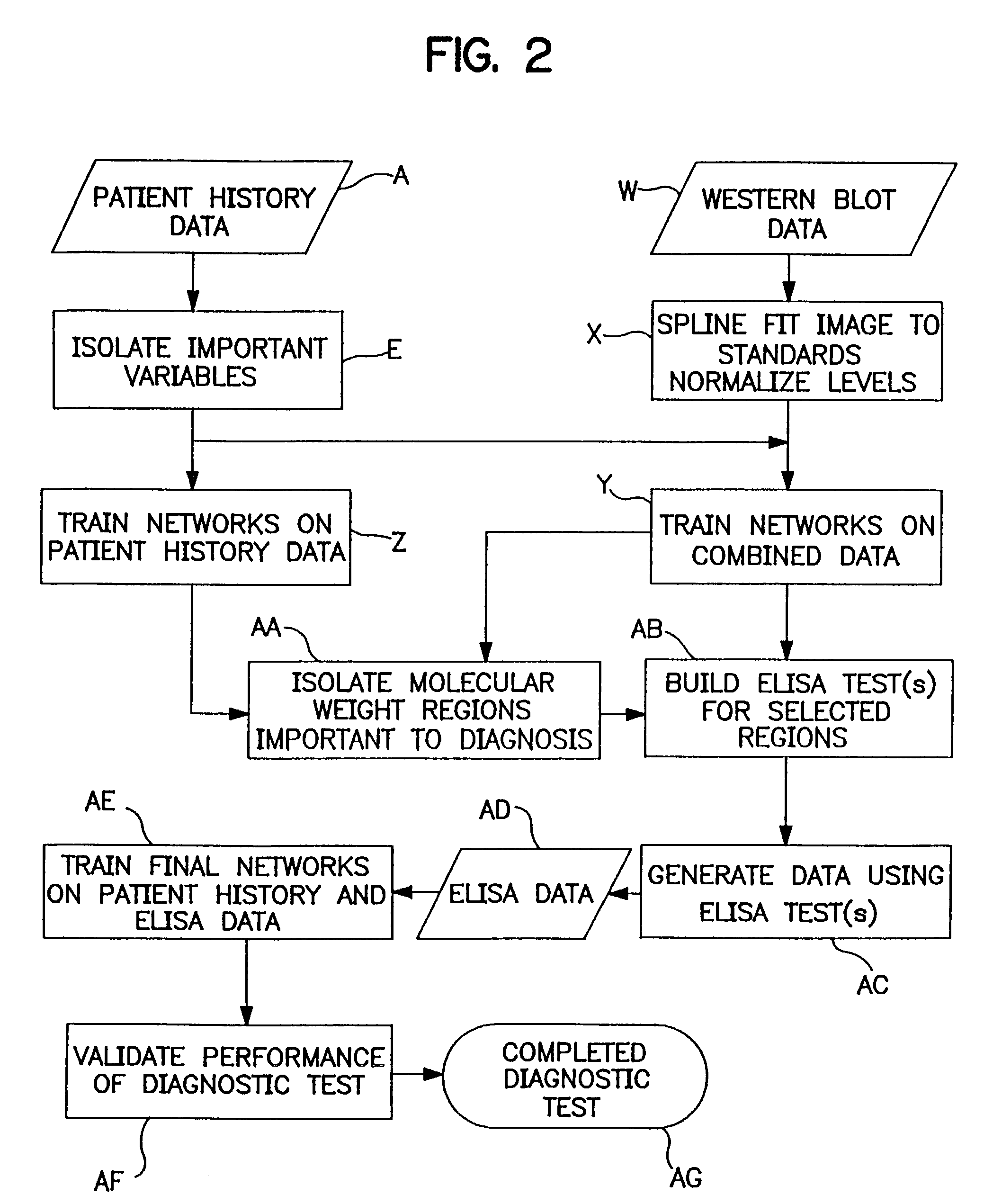Methods for selecting, developing and improving diagnostic tests for pregnancy-related conditions
- Summary
- Abstract
- Description
- Claims
- Application Information
AI Technical Summary
Benefits of technology
Problems solved by technology
Method used
Image
Examples
example
Variable Selection and Development of Neural Nets for Predicting Pregnancy Related Events and Improvement of the Performance of Tests for Fetal Fibronectin
[0327]The Fetal Fibronectin Enzyme Immunoassay (fFN ELISA) detects the presence or absence of fetal fibronectin (fFN) in cervicovaginal secretions (see, U.S. Pat. No. 5,468,619). Detection of fFN in cervicovaginal secretions of symptomatic pregnant women between 24 and 34 completed weeks gestation is associated with preterm delivery. This test is used to predict impending delivery within 7 or 14 days of sampling. For prediction of delivery within 14 days for sampling of fFN, the negative result is greater than 99% accurate. The positive result is more difficult to interpret, and the positive predictive value is less than 20%.
[0328]Neural networks were trained to assess the risk of preterm delivery using over 700 examples of pregnant women who were symptomatic for preterm delivery. Each example contained a multitude of information ...
PUM
 Login to View More
Login to View More Abstract
Description
Claims
Application Information
 Login to View More
Login to View More - R&D
- Intellectual Property
- Life Sciences
- Materials
- Tech Scout
- Unparalleled Data Quality
- Higher Quality Content
- 60% Fewer Hallucinations
Browse by: Latest US Patents, China's latest patents, Technical Efficacy Thesaurus, Application Domain, Technology Topic, Popular Technical Reports.
© 2025 PatSnap. All rights reserved.Legal|Privacy policy|Modern Slavery Act Transparency Statement|Sitemap|About US| Contact US: help@patsnap.com



